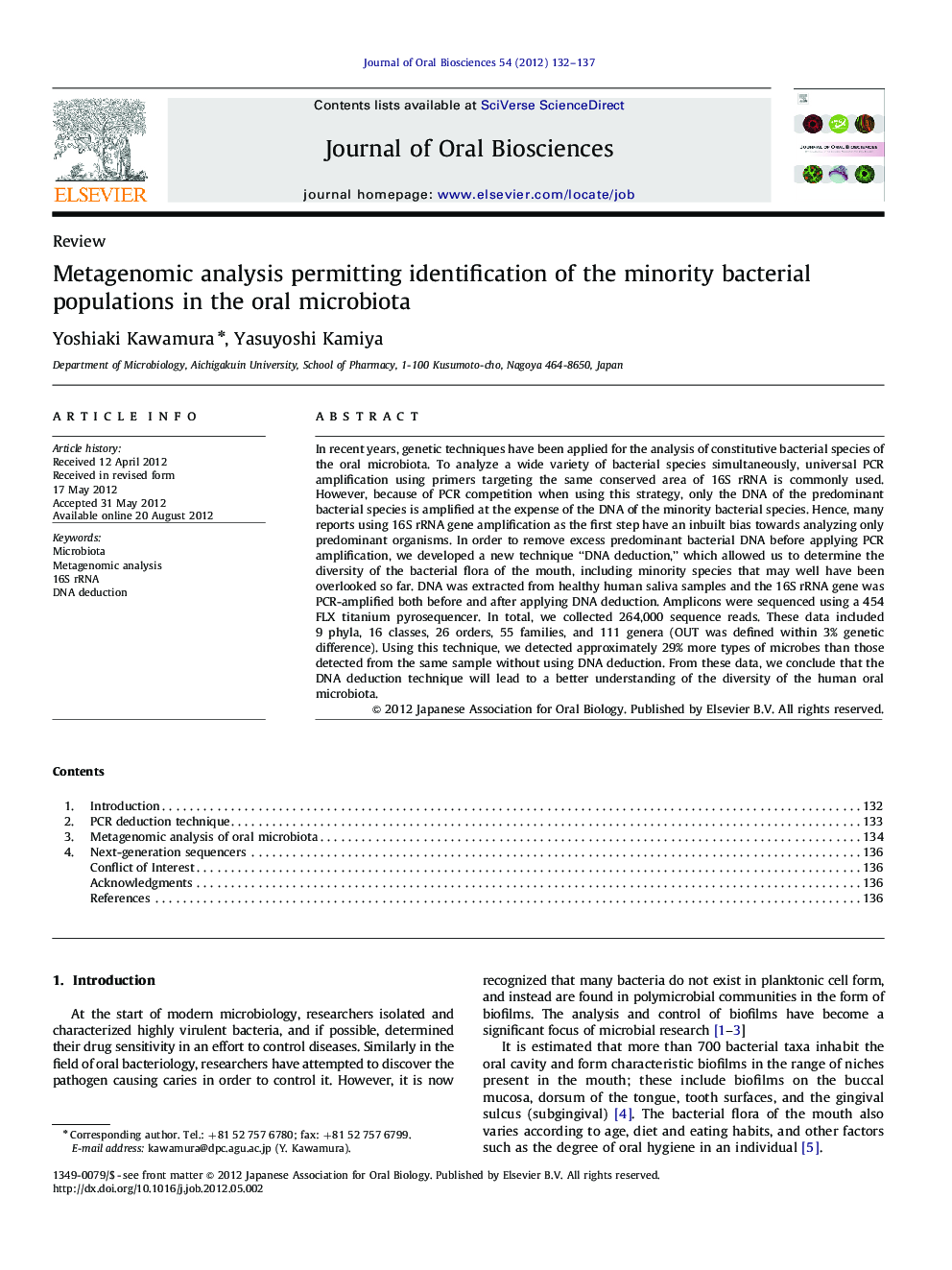| Article ID | Journal | Published Year | Pages | File Type |
|---|---|---|---|---|
| 10163702 | Journal of Oral Biosciences | 2012 | 6 Pages |
Abstract
In recent years, genetic techniques have been applied for the analysis of constitutive bacterial species of the oral microbiota. To analyze a wide variety of bacterial species simultaneously, universal PCR amplification using primers targeting the same conserved area of 16S rRNA is commonly used. However, because of PCR competition when using this strategy, only the DNA of the predominant bacterial species is amplified at the expense of the DNA of the minority bacterial species. Hence, many reports using 16S rRNA gene amplification as the first step have an inbuilt bias towards analyzing only predominant organisms. In order to remove excess predominant bacterial DNA before applying PCR amplification, we developed a new technique “DNA deduction,” which allowed us to determine the diversity of the bacterial flora of the mouth, including minority species that may well have been overlooked so far. DNA was extracted from healthy human saliva samples and the 16S rRNA gene was PCR-amplified both before and after applying DNA deduction. Amplicons were sequenced using a 454 FLX titanium pyrosequencer. In total, we collected 264,000 sequence reads. These data included 9 phyla, 16 classes, 26 orders, 55 families, and 111 genera (OUT was defined within 3% genetic difference). Using this technique, we detected approximately 29% more types of microbes than those detected from the same sample without using DNA deduction. From these data, we conclude that the DNA deduction technique will lead to a better understanding of the diversity of the human oral microbiota.
Related Topics
Life Sciences
Biochemistry, Genetics and Molecular Biology
Clinical Biochemistry
Authors
Yoshiaki Kawamura, Yasuyoshi Kamiya,
